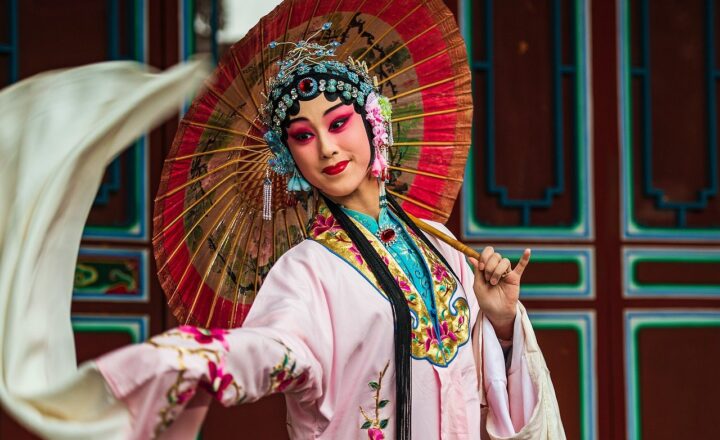Cultural Appreciation vs. Appropriation: A Conversation That Matters
November 18, 2024

In today’s globalized society, cultural exchange is becoming increasingly common. With different cultures interacting more than ever, the lines between cultural appreciation and cultural appropriation have become blurred. Understanding these concepts is vital for fostering respect and sensitivity in our diverse world. In this article, we will delve into the nuances of cultural appreciation and appropriation, exploring their implications in our daily lives.
1. Understanding Cultural Appreciation
Cultural appreciation refers to the respectful acknowledgment and understanding of a culture different from one’s own. This practice often involves:
- Learning and Engaging: Taking the time to learn about the traditions, customs, and history of the culture in question, often through conversations, travel, or education.
- Valuing Contributions: Recognizing and valuing the artistic, culinary, and intellectual contributions of a culture, whether it be through music, food, clothing, or art forms.
- Supporting Communities: Engaging with and supporting creators, artists, and businesses within that culture, ensuring that the benefits of cultural exchange are felt by the community itself.
When done right, cultural appreciation fosters a mutual respect that enriches everyone involved. It encourages a genuine exchange of ideas and experiences, leading to a deeper sense of understanding.
2. Defining Cultural Appropriation
Cultural appropriation, on the other hand, occurs when elements of a culture, typically from a marginalized or disadvantaged group, are taken and used by members of a more dominant culture without permission and often without understanding. This can manifest in various ways, such as:
- Exploitation of Traditions: Borrowing customs, symbols, or attire without understanding their significance or the history that accompanies them. For example, wearing traditional Native American headdresses as a fashion statement undermines the meaningfulness and sacredness of their cultural significance.
- Commercialization: Profiting from the cultural products or practices of another culture without giving credit or compensation to the source community. This includes the sale of items like dreamcatchers or henna tattoos in ways that strip them of their cultural context and significance.
- Stereotyping: Using cultural elements to create caricatures or stereotypes that perpetuate harmful narratives about a culture, rather than promoting understanding and respect.
This appropriation often leads to a number of issues, including disenfranchisement of the original culture, exploitation of its symbols, and perpetuation of stereotypes that misrepresent its people.
3. Recognizing the Fine Line
Understanding the difference between appreciation and appropriation requires a nuanced approach. Here are some questions to ask:
- Who is benefiting from the use or representation of this cultural element? Is it the original culture or the appropriating group?
- Is the cultural element being contextualized appropriately? Are its origins, meanings, and significance being acknowledged?
- Are members of the appropriated culture included in conversations or profiting from the appropriation?
Being mindful and asking these questions can help prevent unintentional appropriation and promote more genuine cultural appreciation. Engaging with and amplifying voices from the culture rather than assuming a position of authority is crucial.
4. The Role of Intent and Context
The context in which cultural elements are used is vital to understanding whether appreciation or appropriation is occurring. Here are some factors to consider:
- Intent: What is the intent behind using a specific cultural aspect? Is it meant to honor and celebrate that culture, or is it being used frivolously? Intention can shed light on the motivation behind the action, although it doesn’t excuse potential harm in appropriation.
- Audience Reception: How do individuals from the culture being borrowed perceive its use? Engaging in conversations with members from that culture can clarify insights and perspectives on appropriated elements.
- Historical Context: Awareness of the historical and present-day inequalities faced by the culture can provide essential context for understanding the implications of appropriation versus appreciation.
These factors emphasize the importance of humility and a willingness to learn from individuals in the culture about their experiences, needs, and preferences regarding representation.
5. Creating Dialogue and Awareness
Fostering a culture of appreciation involves ongoing dialogue and learning. Here are ways to engage meaningfully:
- Education: Take courses, read books, and attend workshops that educate you about different cultures and their histories. Knowledge aids in nuanced understanding and fosters respect.
- Listening: Take the time to listen to voices from the culture you admire. Their stories, experiences, and perspectives can provide invaluable insights about appreciation versus appropriation.
- Engaging: Participate in cultural events or festivals that honor and celebrate diversity. It’s an opportunity to show genuine respect and support for the community while learning about its intricacies.
By fostering dialogue, we contribute to building understanding and respect for cultural practices and values, furthering collaboration rather than appropriation.
Conclusion
The conversation around cultural appreciation and appropriation is essential in today’s interconnected world. By understanding the distinctions between the two, recognizing the fine lines, and promoting respectful appreciation, we can celebrate the rich tapestry of our diverse cultures without causing harm. Awareness and intention matter greatly in our interactions, and fostering genuine connections enables a more inclusive, respectful approach to culture.
As we navigate through discussions about identity, community, and respect for cultural heritage, remember that it’s not just about celebrating other cultures but also about honoring their origins, significance, and the individuals who comprise them. Through education, empathy, and conversation, we can all contribute to a greater understanding of cultural dynamics and promote appreciation rather than appropriation.








